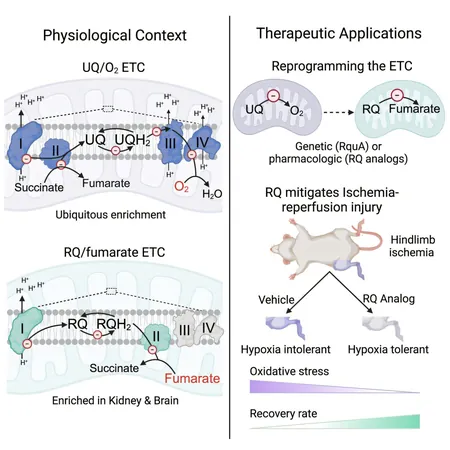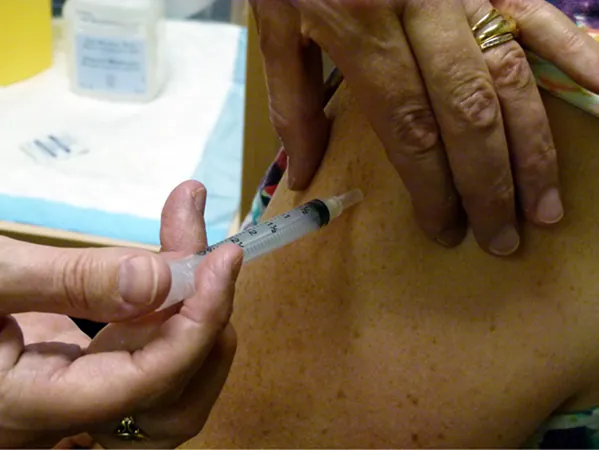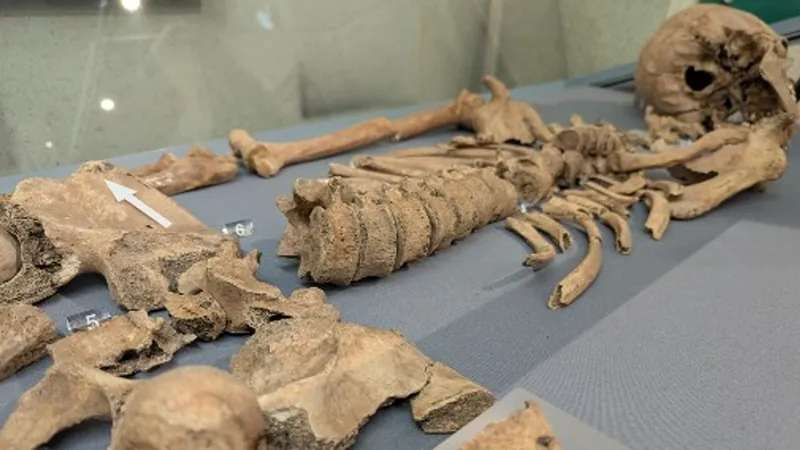
Revolutionary Discovery: New Electron Transporter in Mammals Offers Hope Against Low Oxygen
2025-04-15
Author: Charlotte
In a groundbreaking revelation, scientists have unveiled that rhodoquinone, a vital electron transporter previously thought to only exist in simpler organisms, plays a crucial role in mammals' energy production. This discovery could shift paradigms in how we understand cellular metabolism, especially in low-oxygen environments.
Ubiquinone has long been the sole recognized mitochondrial electron transporter in mammals, but thanks to cutting-edge high-resolution mass spectrometry, Dr. Jessica Spinelli and her research team have identified rhodoquinone as a significant player within the mammalian electron transport chain. This significant finding was shared in the renowned journal, Cell.
What makes rhodoquinone stand out is its unique ability to sustain mitochondrial function even when oxygen levels are critically low. Dr. Spinelli's research could pave the way for innovative clinical applications, particularly in safeguarding cells from the perils of hypoxia, a condition where they are deprived of necessary oxygen.
"The identification of rhodoquinone in very specific mammalian tissues opens exciting avenues for clinical exploitation to enhance cell vitality and counteract oxidative stress in low-oxygen settings," Spinelli stated. This discovery could revolutionize treatment approaches for ischemia, a dire condition caused by inadequate oxygen and nutrient supply to tissues.
Imagine the potential: extending the viability of organs for transplantation by preserving them longer before oxygen deprivation leads to cell death. This dream application could transform the landscape of organ donation and transplantations.
Cells require a steady flow of electrons to produce the energy vital for survival. Traditionally, these electrons have been known to shuffle through ubiquinone, but intriguing anomalies noticed by Spinelli in mouse tissues suggested there was more to the story. This prompted her to investigate further.
By employing an innovative combination of high-resolution mass spectrometry and genetic engineering, Spinelli and her team successfully pinpointed rhodoquinone as an essential electron transporter specifically adapted for low-oxygen conditions. Found mainly in critical tissues like the brain, liver, and kidneys, rhodoquinone could explain how these organs cope with frequent oxygen fluctuations.
Advanced mass spectrometry played a pivotal role in this discovery by enabling researchers to precisely identify molecules based on their weight and chemical characteristics. Using a state-of-the-art device capable of differentiating compounds that would appear identical on less sophisticated equipment, Spinelli’s team was able to confirm their findings.
The researchers even developed groundbreaking compounds to reprogram the electron flow in the transport chain, potentially offering immense therapeutic prospects for protecting tissues against low oxygen exposure during emergencies like heart attacks or strokes.
In essence, this groundbreaking discovery not only enriches our understanding of cellular energy but also opens a treasure trove of possibilities for medical science, promising to change how we approach conditions related to oxygen deprivation.









 Brasil (PT)
Brasil (PT)
 Canada (EN)
Canada (EN)
 Chile (ES)
Chile (ES)
 Česko (CS)
Česko (CS)
 대한민국 (KO)
대한민국 (KO)
 España (ES)
España (ES)
 France (FR)
France (FR)
 Hong Kong (EN)
Hong Kong (EN)
 Italia (IT)
Italia (IT)
 日本 (JA)
日本 (JA)
 Magyarország (HU)
Magyarország (HU)
 Norge (NO)
Norge (NO)
 Polska (PL)
Polska (PL)
 Schweiz (DE)
Schweiz (DE)
 Singapore (EN)
Singapore (EN)
 Sverige (SV)
Sverige (SV)
 Suomi (FI)
Suomi (FI)
 Türkiye (TR)
Türkiye (TR)
 الإمارات العربية المتحدة (AR)
الإمارات العربية المتحدة (AR)